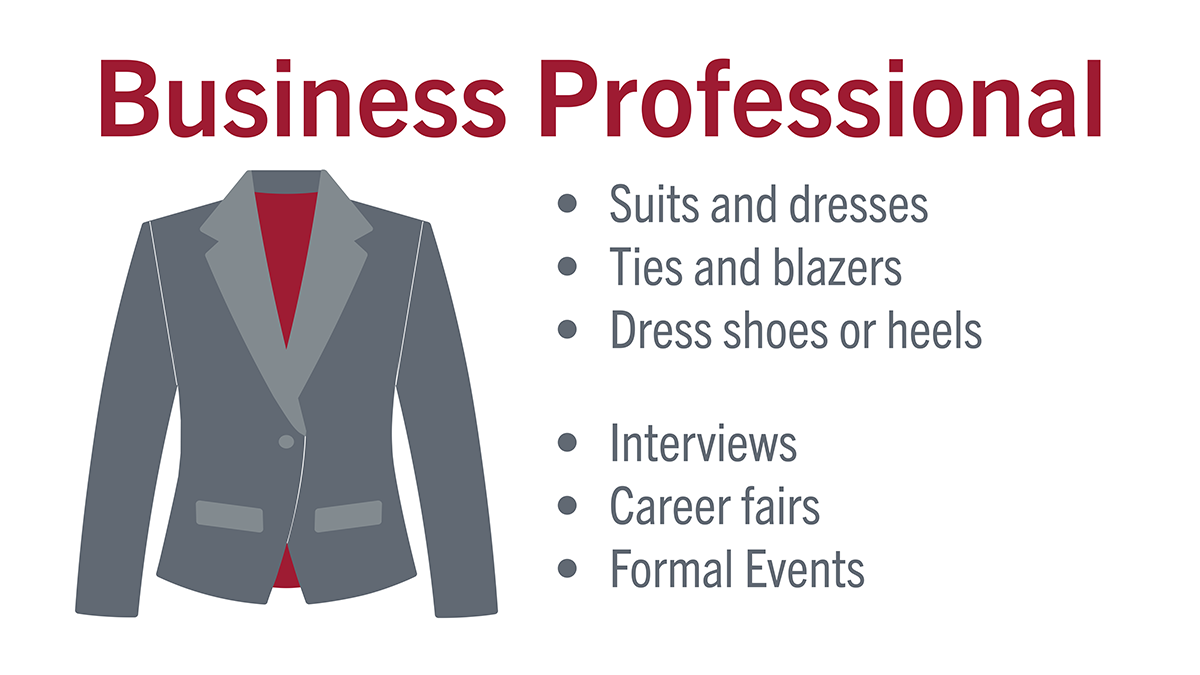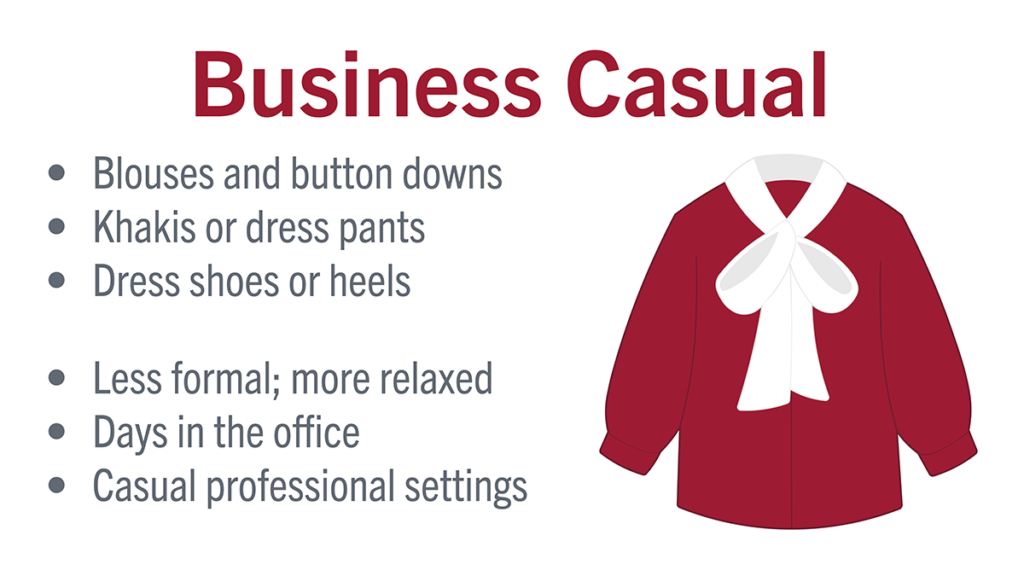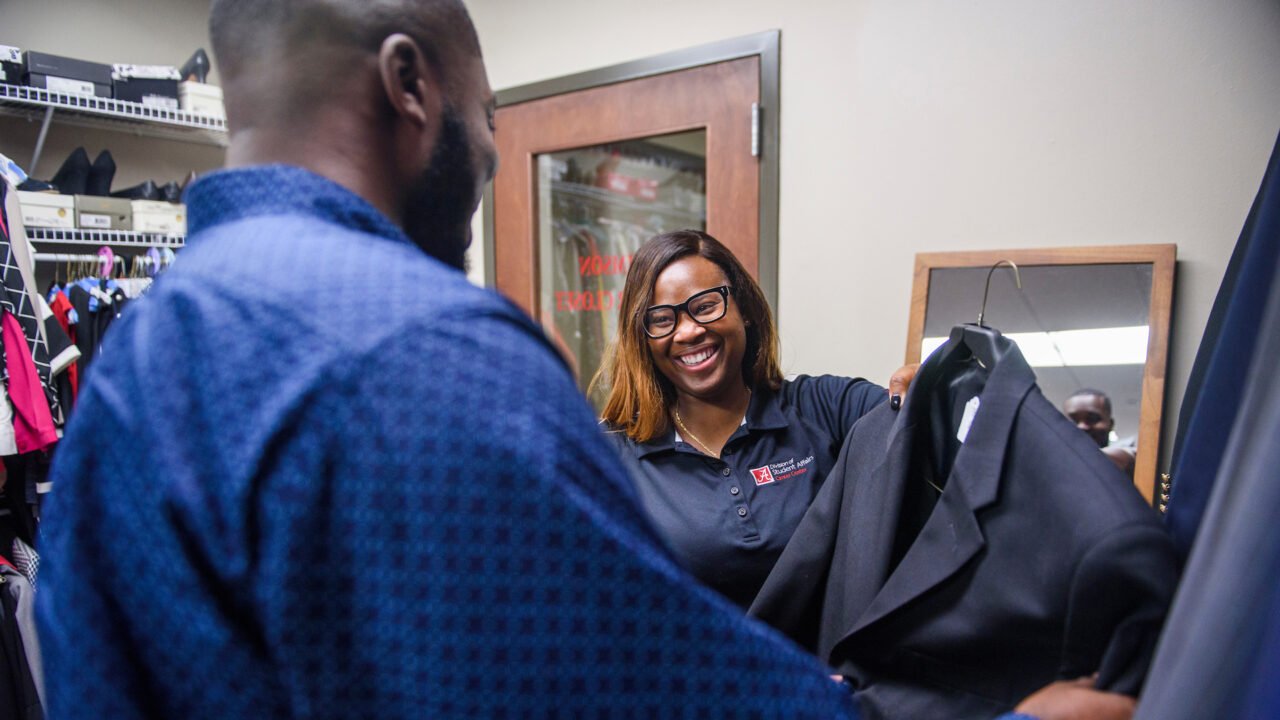Before The University of Alabama Career Fairs on Feb. 13 and 14, refresh your professional attire and utilize the Denise and Chandler Root Crimson Career Closet. This resource provides professional attire for students to rent, so you can look and feel good for that upcoming interview, career fair or class presentation.
Items from the Crimson Career Closet may be borrowed for up to seven days, and students may check out up to four pieces at a time. It costs nothing to check out a piece, and the inventory includes everything you would need, including blazers, pants, button-down shirts, blouses, skirts, ties and full suits. Students can easily schedule a time to browse using Handshake.
Dressing professionally for interviews shows that you understand the importance of making a positive impression. This can assure the hiring manager that you will use that same judgement on the job, whether choosing attire or taking some other action.
Mary Lowrey, director of career education and development, UA Career Center

Looking put together and professional is important to both your outward image and the way that prospective employers, colleagues or professors will perceive you. The way you present yourself could perhaps make you the candidate who is hired over another and will set the tone for the rest of your employment.
Where do I start?
If you are just starting to build your collection of workwear, the Crimson Career Closet staff recommends starting off with basics that can be mixed and matched to create many different combinations. For a business professional wardrobe, staff recommend:
- A suit
- A contrasting jacket and pants or skirt
- A solid-color dress shirt or blouse
When you’re just starting to build your wardrobe, pants or skirts and jackets should be neutral colors, such as navy, black or gray. After you’ve acquired these simple basics, you can branch out into colors that reflect your personal style, like simple patterns or soft colors.

For accessories, they recommend students start with black or brown shoes, a belt to match, subtly patterned ties and simple jewelry. In addition, a sleek brown or black portfolio is perfect for taking notes, collecting flyers or storing résumés while at an interview or career fair.
How do I incorporate business casual?
Figuring out the difference between a business formal and business casual dress code can be confusing for many people, especially if the office doesn’t have a strict set of rules or a dress code to follow. Luckily, the University’s Career Center has a great guide to help students figure out the ins and outs of business casual. Traditionally, business casual is a more relaxed, but still appropriate, style of dress for the workplace. For those just starting out, some great basics to invest in are:
- Dress pants and/or skirts in neutral colors like black, navy, grey or khaki
- A blazer
- Shirts in solid or subtle prints
- A cardigan or sweater
- Any closed-toe, non-athletic shoes
A business casual wardrobe allows one to show off more of their own unique personal style, and add more color to their wardrobe. Feel free to incorporate fun colors and trendier accessories, like belts and bags. However, be aware that every workplace is different and yours could be more strict — or even more relaxed — than these guidelines.

Remember, it is always better to be overdressed than underdressed on your first day of a career fair, internship or job after graduation.
